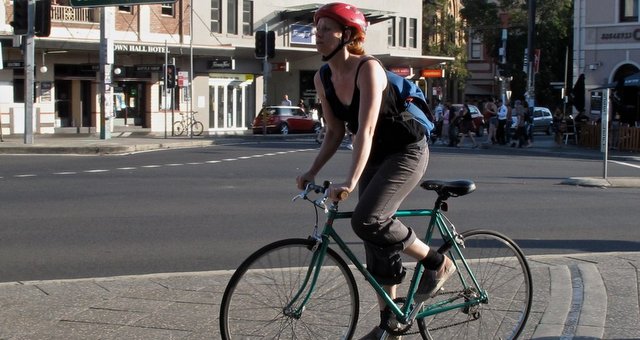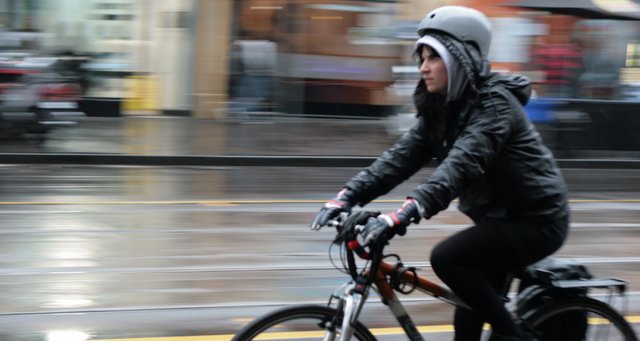Riding to work is fun, saves you money and gets you fit. So what’s stopping you? Here are the answers to four common reasons not to commute by bike.
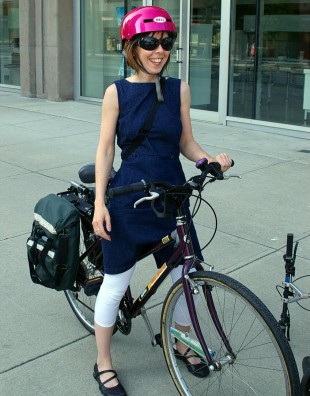
Image by Rob Baxter via Flickr
Whenever I rock up at the pub, or a party and even work decked out in leggings, layers and my rather worn-out cleats, a surprising number of women in the room profess their envy that I’ve clearly mastered the art of London traffic and got my exercise in without having to fork out for a gym membership.
Being an inevitably irritating devotee of bike-evangelism, I always wax lyrical about how you can do it too, but my enthusiasm isn’t reflected in either their confidence, or the number of women on bikes, on the road.
Commuting by bike, I’m told, is scary, sweaty, inconvenient and downright dangerous – especially in London. But my commute is one of the best bits of my day, so here’s why you should get stuck in, and how you can do it safely.
Why should I commute by bike?
The average cycle commuter loses nearly a stone in their first year of cycling . Further benefits are almost too good to be true: cycling is a low impact sport that means you’re unlikely to get the kind of injuries you can pick up jogging; according to the BMA your risk of heart disease is slashed and your exposure to more daylight makes you feel happier. You’ll also save a boat-load of cash (around £30 a week on transport for the average Londoner, and untold amounts for gym memberships!) and you’re doing your bit for the environment too.
But don’t I need a load of fancy kit?
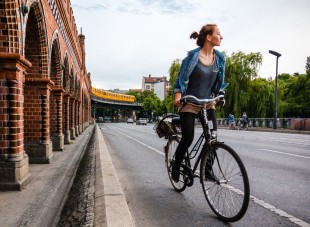
by danielfoster437 via Flickr
No! There are plenty of people with all the gear, and no idea – but all you need is a safe bike, a well-fitting helmet, some good lights and some comfortable, sensible clothing, like trousers that don’t get caught in your chain.
You don’t need a cupboard full of Lycra or a sleek carbon bike to commute. A second-hand bike is fine, so long as you have it safety-checked by a professional – any bike shop will do this.
A reflective jacket or hi-vis vest is always a good idea, and all of the kit you need can be found pretty cheaply online, with plenty of reviews to help you.
The law says all new bikes should be equipped with a bell when they roll out of the bike shop. Don’t take it off, and get one if you don’t already have one – I can’t tell you how useful it is for warning pedestrians you’re on the move.
For a longer distance commute, you might want to think about padded shorts and some gloves, but they’re not essential. Make it as fancy as you like – or in my case, as fancy as your purse can handle.
But it’s so dangerous
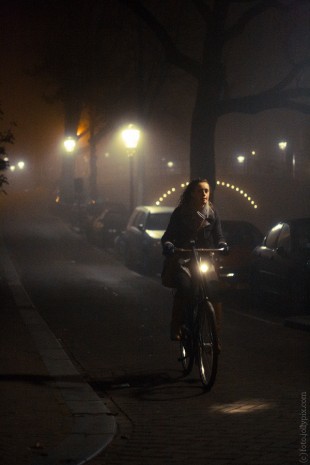
It can be dangerous, sure, but so can driving or walking. If you take the right precautions and act sensibly then the likelihood is that you’ll be fine.
Use segregated paths like London’s cycle superhighways where you can. They’re not perfect, but they feel a lot safer than mixing with lorries on A-roads. When you do take to the highway, the best thing to do is think and act like a car: maintain your line and act predictably. Take the whole road or lane if you need; never skip lights; don’t tuck yourself on the left-hand side of vehicles at traffic lights, or weave through traffic (you can always wait) and signal clearly.
There are some great tips here and there are some beginners’ proficiency courses that cover the basics. My top tip is to pop to your local park and practice signaling and looking over your shoulder, until you feel confident. There are some great videos out there about cycling safety and confidence too.
Make sure your lights are bright and visible, and use multiple lights at night. Combine the static light recommended by law, with a flashing light for additional visibility and change the batteries before you think they’re due to fail. I like to deck myself out like a Christmas tree on dark rides.
A helmet’s a good confidence booster, but don’t think it’ll save you from a serious crash; helmets are designed for low-speed crashes without heavy motor vehicles involved. Never listen to music – your ears are for listening out for traffic.
But I’ll turn up to work all sweaty and horrible
This one’s a toughie – if you think about getting your sweat on as something horrible, then maybe it’s not for you after all, but there are ways to make the faff simpler.
You can ride a few days of the week, or skip the ride on the days when you have a packed schedule or a social engagement after work, or even if it’s chucking it down and you just don’t feel like it.
You can leave some of your work clothes in the office. That’s nice and easy if you always wear a suit, a little trickier admittedly if you don’t. Panniers are the solution to everything, though – much better than a rucksack for not crushing your stuff.
Lots of workplaces have showers – or you can do a deal with the local gym to let you use their showers and changing rooms on the cheap.
The simplest way to avoid getting sweaty is to not ride too fast. Playing racer isn’t mandatory, and there are loads of people pootling to the office in day clothes.
At the end of the day, riding to work is a commitment, though one with huge benefits, and sometimes it can be a pain. Look at it this way: at least you’re not sitting next to someone on the Tube or the bus, listening to their music and catching their cold.
But routefinding is tough
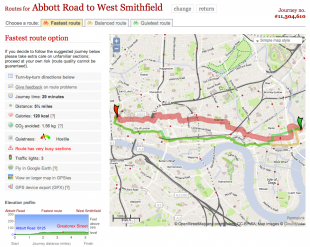
It can be, but there are plenty of tools to make it easier. In London (or any busy city centre), you have to make quick decisions and one-way systems can send you round in circles.
The bike route finder on the Transport for London website has easy, medium and faster routes, and Google maps now has a bike function. Lots of people swear by routes from Cyclestreets, and the site has plenty of apps that use its mapping and routing.
Sustrans has a routefinder too, and you can always do as I do, and rely on the trusty A-Z, or any streetmap. The best way is to try one route and mix that in with other maps, or little nooks and dog-legs you find during the ride itself.
It’s true that at first you have to be a bit adventurous. Leave plenty of time for your inaugural journey (each way), explore a bit and don’t forget that you can always pull over and stare around blankly. Getting a bit lost is the best way of finding your way around, and there’s no shame in it at all.
Come on, be brave, be cool, be healthy get on your bike and join the cheery (revolutionary) community of ladies that ride to work!
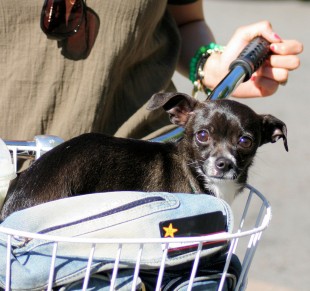
[Home page image for this story by kamerakamote via Flickr]

